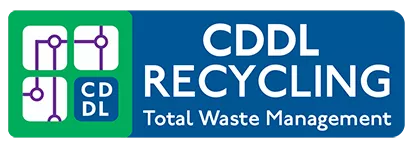10 Ways to Master School Waste Management
As educational institutions, schools and colleges play a pivotal role in shaping the future. One way to contribute to a brighter tomorrow is by adopting sustainable school waste management practices.
This guide is tailored to help schools and colleges navigate the path to a cleaner, greener campus while instilling valuable lessons in environmental responsibility.

1. Understanding the Impact
Waste isn’t just about what ends up in the bins. It’s about the broader impact on our environment. Start by educating students on the consequences of improper waste disposal, emphasizing the importance of reducing, reusing, and recycling.
2. Conducting a Waste Audit
Begin your sustainability journey by conducting a school waste management audit. Understand the composition of your waste to identify areas for improvement. This hands-on approach creates awareness and provides valuable data to tailor your school waste management plan.
3. Implementing Source Separation
Encourage students and staff to separate waste (pre-cycling) at its source. Clearly labeled bins for recyclables, compostables, and non-recyclables make it easy for everyone to participate. This simple step significantly enhances the effectiveness of your school waste management system.

4. Engaging the Community
Waste management in schools is a collective effort. Involve students, teachers, and support staff in the process. Organise workshops, seminars, and awareness campaigns to foster a sense of shared responsibility for the environment.
5. Establishing a Recycling Program
Collaborate with a total waste management company like CDDL to set up a robust school waste management program. Clearly communicate what can and cannot be recycled, and make it convenient for students and staff to participate. Consider partnering with recycling organizations to make the process smoother.
6. Composting on Campus
Take your sustainability efforts a step further by implementing school composting. Use organic waste from the cafeteria and campus grounds to create nutrient-rich compost. This not only reduces landfill waste but also supports eco-friendly landscaping initiatives.
7. Reducing Single-Use Plastics
Single-use plastics contribute significantly to environmental pollution. Encourage the use of reusable alternatives and provide water stations to reduce the reliance on plastic bottles. Implement policies that discourage the use of single-use plastics within the school waste management premises.
8. Integrating Sustainability into Curriculum
Extend the lessons beyond the classroom by integrating sustainability into the curriculum. Explore projects and activities that involve school waste reduction, recycling, and environmental conservation. This hands-on approach makes sustainability a part of students’ daily lives.
9. Monitoring and Evaluating Progress
Regularly assess the effectiveness of your school waste management initiatives. Monitor waste reduction, recycling rates, and community engagement. Use this data to adjust strategies and continuously improve your school waste management sustainability efforts.
10. Celebrating Achievements
Recognize and celebrate milestones in your school waste management journey. Highlight achievements, no matter how small, to inspire a culture of continuous improvement. Consider awards or recognition programs to motivate students and staff.
How CCDL Recycling can help with school waste management
Adopt a green mindset and let’s create a sustainable future together! Contact CDDL Waste Management today to explore tailored school waste management solutions for your school or college. 🐾🌿
Together, let’s redefine the way we approach waste, and shape a greener tomorrow.
Enjoyed this article? Check our the rest of our recycling blogs and follow us on facebook for all of our lateset news









